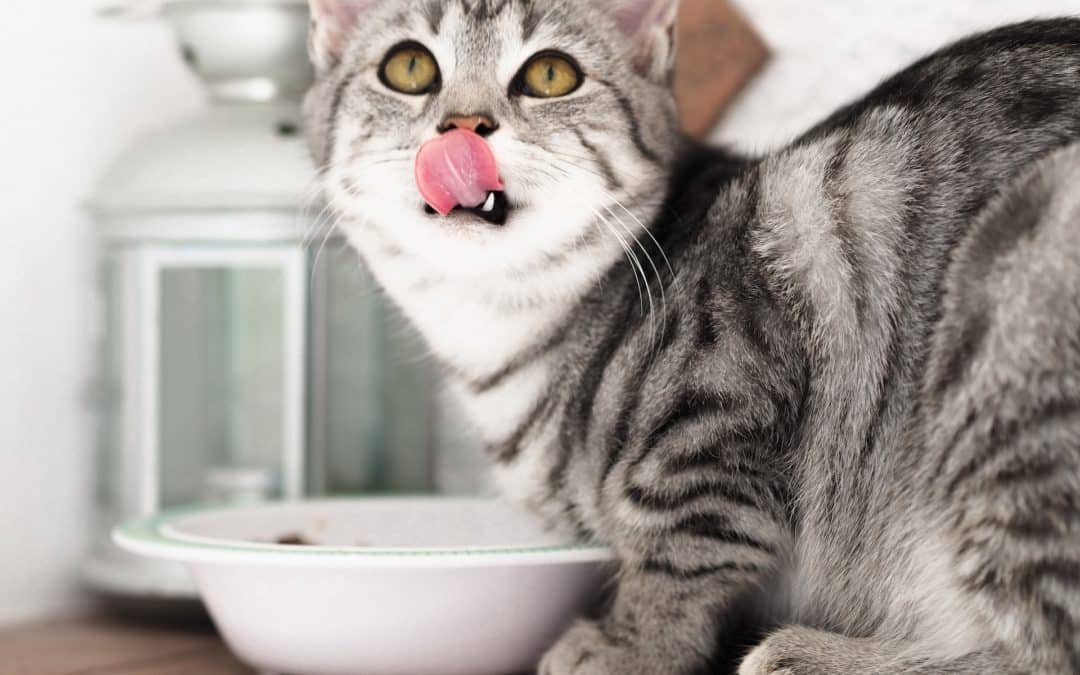What do you think is the dirtiest item in your house? The trash can? The toilet? The door mat? It just might be your pet’s food dish.
Even if you only feed your pet dry kibble, their bowl still gets dirty. The combination of saliva and food residue creates a perfect breeding ground for germs. Pet dishes can be contaminated with E. coli, salmonella, and other bacteria that are dangerous to pets and people alike.
Here’s more about why you need to wash your pet’s dishes, how often to do it, and how to prevent pet food contamination.
How Often Do I Need to Wash My Pet’s Dishes?
There’s a reason why you shouldn’t eat your breakfast cereal out of the same bowl you used last night for chili. And even if your pet isn’t finicky (we’re looking at you, dogs) they shouldn’t be eating out of dirty dishes either.
Just like you wash your dishes before you use them again, you need to do the same for your pet. In fact, the FDA recommends washing pet dishes with hot, soapy water after every use to prevent the spread of food-borne illnesses.
Washing your pet’s dishes can even help them have better dental health, because bacterial infections are the main cause of gum disease and tooth loss in pets. The cleaner their dishes, the healthier they’ll be.
When Is the Best Time to Wash My Pet’s Dishes?
A good time to wash your pet’s food and water bowls is right before you refill them. That way, you can wash your hands at the same time. This timing works best if you have pets that free-feed. If your pets get fed on a schedule, you can wash their dishes as soon as they’re finished eating. (And then wash your hands.)
Tips for Preventing Pet Food Contamination
- Always wash your hands before and after handling pet food or dishes.
- Always use a scoop or spoon to serve your pet’s food, and wash it afterwards.
- Wash your pet’s water bowl and refill it every time you feed them.
- Dish soap and hot water will work fine. If you want to sanitize your pet’s dishes, you can run the dishwasher on hot.
- Store any used wet food in an airtight container in the refrigerator. Promptly dispose of any uneaten wet food.
- Keep kibble in a dry, cool place. Don’t leave the food scoop in the bag.
- Don’t forget to wash and sanitize your cat’s water fountain on a regular basis as well. Even though the water is flowing, it can still get dirty from their saliva.
Switch to Stainless Steel Bowls
The type of food and water bowls you use makes a difference. Plastic and ceramic pet bowls are more likely to harbor germs due to the tiny cracks that form on the surface of these materials. Stainless steel is the most sanitary type of pet dish, while plastic is the least sanitary.
Stainless steel is resistant to bacteria, mold, and microorganisms, and it’s also easy to clean. That is why it’s so often used for cookware and kitchen appliances, and why it makes the best type of pet dishes as well. Copper is even more resistant to bacteria than stainless steel, so if you feel like splurging, get your pet a set of copper food and water bowls for their next birthday.
Even Healthy Pets Need Vets
When was your pet’s last checkup? Are they up to date on all their vaccinations? Do they need to have their teeth cleaned?
At Anasazi Animal Clinic, we treat all our patients like they’re part of the family, and we want to see them at least once a year to make sure they’re in good health. To make an appointment for an exam, send us a message online or give us a call at 480-497-0505 today. We look forward to seeing you!
Photo by Laura Chouette on Unsplash used with permission under the Creative Commons license for commercial use 1/12/2024.

